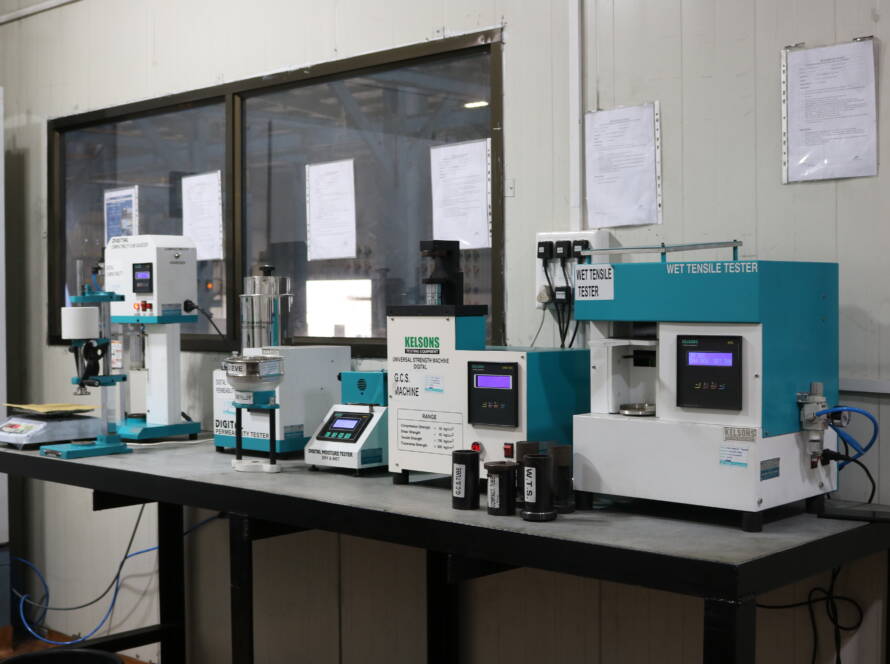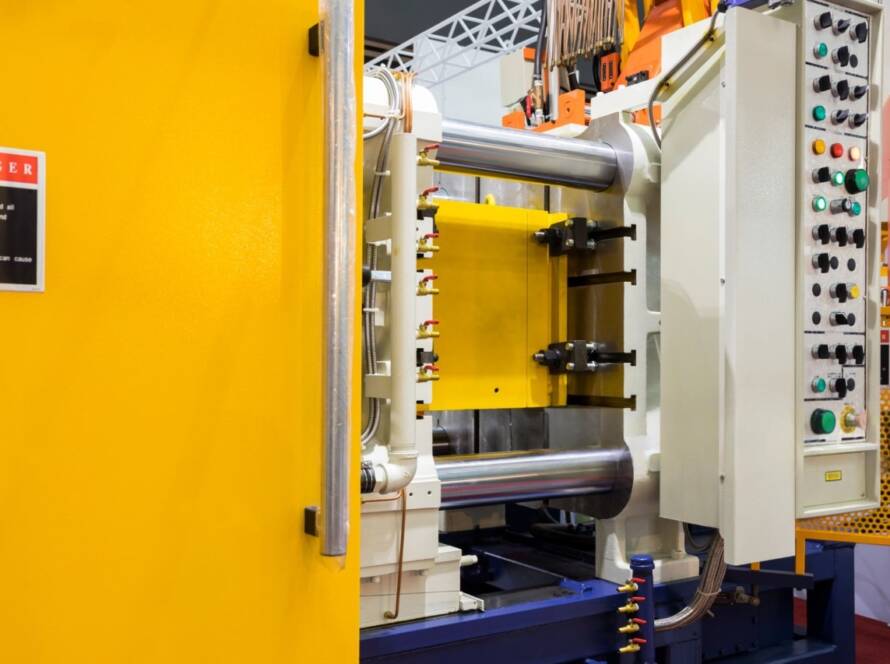The sand casting process is among the oldest and most ubiquitous metal-forming processes that have been employed for more than 3,000 years. It is mythical regarding usability, economic feasibility, and versatility. It continues to be one of the column processes of industrial manufacturing, especially in the production of intricate metal components in automobile, aerospace, and machine manufacturing industries. It accounts for 70% of all the casts produced in the whole world.
Introduction to Sand Casting
Sand casting helps pour the molten metal inside a hollow sand mould and makes you get a specific pattern. Sand casting has room for a diverse array of metals such as iron, aluminium, bronze, and steel and can be used to make anything from engine blocks to sculptures.
Sand casting process steps are long-term in character due to their low tooling cost, largeness, and capacity to cast huge, complex pieces that other casting methods find difficult to make.
Large Sand Casting Parts
- Pattern: Copy of the end product, usually wood, plastic, or metal, that forms the mould cavity.
- Mould: Developed by encasing the pattern within the sand, two pieces (drag and cope) that define the outer shape of the casting.
- Core: Sand insert filled inside the mould to form hollows or inner cavities within the casting.
- Gating System: Passageways by which molten metal is fed to the mould cavity, the runners, sprue, and risers.
- Sand Mixture: A mixture of silica sand, clay, and additives which maintains the rigidity of the mould at elevated temperatures.
It is estimated that due to the simplicity of the process, the global sand casting will show a CAGR of 6-7% in 2024 to 2033 time frame.
Process Steps of the Sand Casting Process
Let us see in detail about the sand casting process steps and how they help in making a difference in the quality and precision of sand casting products.
1. Pattern Creation
Sand casting starts with pattern design and fabrication. Patterns should provide room for the contraction of metal when it cools down and, therefore, are slightly bigger than the finished product. Handwork makes patterns in traditional patterns, but nowadays, precision is achieved by CNC machining or 3D printing.
Geometries with several facets can have multi-piece patterns or cores to provide internal details.
(Source: https://www.generalkinematics.com/blog/sand-casting/)
2. Mold Preparation
Sand compound, usually, is clay or chemically resin bonded and must resist the heat and pressure of molten metal. Mould is divided into two halves. Vent holes are not necessary for the release of gases when pouring.
3. Core Making (If Required)
In hollow regions of castings, sand cores are placed in the mould, which is pressed. Before the flask is closed, the cores are prepared individually in core boxes and inserted into the mold cavity. They should be erosion-resistant to molten metal but yet friable to break up on shakeout.
4. Assembly of Mould and Core
The gating system, sprue (vertical channel), runners (horizontal channels), and risers (feeders of excess metal), is rigid in regulating the flow of molten metal and reducing defects such as shrinkage. This step is known to consume an energy of around 6-20% on an average of the total energy.
5. Pouring the Molten Metal
When your mold is ready, the molten metal is poured into the sprue after being heated to the right temperature in a furnace. The metal will freeze before the mold if it goes too slowly, and it will create turbulence and defects if it moves too quickly.
(Source: https://fractory.com/sand-casting-explained/)
6. Solidification and Cooling
The metal hardens and the metal’s and casting thickness’s thermal conductivity affect cooling. Prolonged cooling will improve metallurgical characteristics, but rapid cooling will result in internal tensions. In order to prevent porosity, the operator inserts more metal into the casting during contraction.
7. Shakeout and Removal
After hardening, the mould is shaken or hammered to break down the sand, a process called shakeout. The casting is removed, and loose sand is cleaned off using air jets or shot blasting. Cores are also removed at this stage, usually disintegrating as a result of the thermal stress of molten metal.
(Source: https://www.indiamart.com/proddetail/sand-castings-3345715462.html)
Sand casting production rate is thus around 5-30 mins slow cycle production rate, with the requirement for extensive machining.
Advantages of Sand Casting
- Design Flexibility: Can cast large, intricate parts with cavities within.
- Versatility of Metals: It can cast nearly all ferrous and non-ferrous metals.
- Scalability: Ideal for small workshops and high-volume foundries.
Sand Casting Innovations of Today
Advances further shortening the sand casting process steps. Robot moulding machines, robot pouring machines, and simulation software shorten cycle times and minimize defects.
Further, environmentally friendly binders and recycling sand systems minimize environmental issues.
Applications Across Industries
The universal nature of sand casting makes it a baseline process for most industries:
- Automotive: Engine blocks, cylinder heads, and transmission cases.
- Construction: Valve, pump casing, and heavy machinery parts.
- Art and Architecture: Ornaments, statues, and decorative metal trim.
- Aerospace: Turbine casings and light structural components.
Conclusion
Sand casting process steps are always an essential manufacturing process in which the ancient art is merged with proper modern engineering. It highlights how adaptable a material is in different contexts and industries. It amounts to an art-science synergy that provides unparalleled flexibility for creating challenging, complex metal parts.
Even with issues of surface finish and the environment, subsequent innovations make it valuable in the face of a changing industrial landscape. To producers who need a low-cost, efficient way to shape molten metal into beneficial parts, sand casting is the test of time.
FAQs
1. What is the sand casting process?
Sand casting is a metal casting process where molten metal is poured into a sand mold cavity that replicates the desired shape. Once cooled and solidified, the metal casting is removed and cleaned to achieve the final product.
2. What are the main steps involved in the sand casting process?
The sand casting process involves several key steps: creating a pattern, preparing the mold, making and assembling cores if needed, pouring molten metal into the mold, allowing it to cool and solidify, and finally performing shakeout and cleaning. These steps together form a cost-effective method for producing complex metal components with precision.
3. Which metals are commonly used in sand casting?
Sand casting is suitable for both ferrous and non-ferrous metals such as cast iron, steel, aluminum, bronze, and brass.
4. What are the advantages of the sand casting process?
Sand casting offers great design flexibility, low tooling costs, and the ability to produce complex and large parts. It also works with a wide range of metals and is suitable for both small and large production runs.
5. What are the limitations of sand casting?
While cost-effective, sand casting can have limitations like rough surface finishes, slower production rates, and the need for post-casting machining to achieve tight tolerances.
6. How does sand casting compare to other casting methods?
Unlike die casting or investment casting, sand casting is more affordable for low-volume production and can handle larger parts. However, it usually results in less precise surface finishes than these other methods.
7. Can sand be reused in the sand casting process?
Yes, foundries often reclaim and recycle sand using specialized systems to reduce waste and improve sustainability.
8. How is modern technology improving the sand casting process?
Automation, robotic pouring, 3D-printed patterns, and simulation software are modern innovations that help improve casting accuracy, reduce defects, and enhance productivity.


